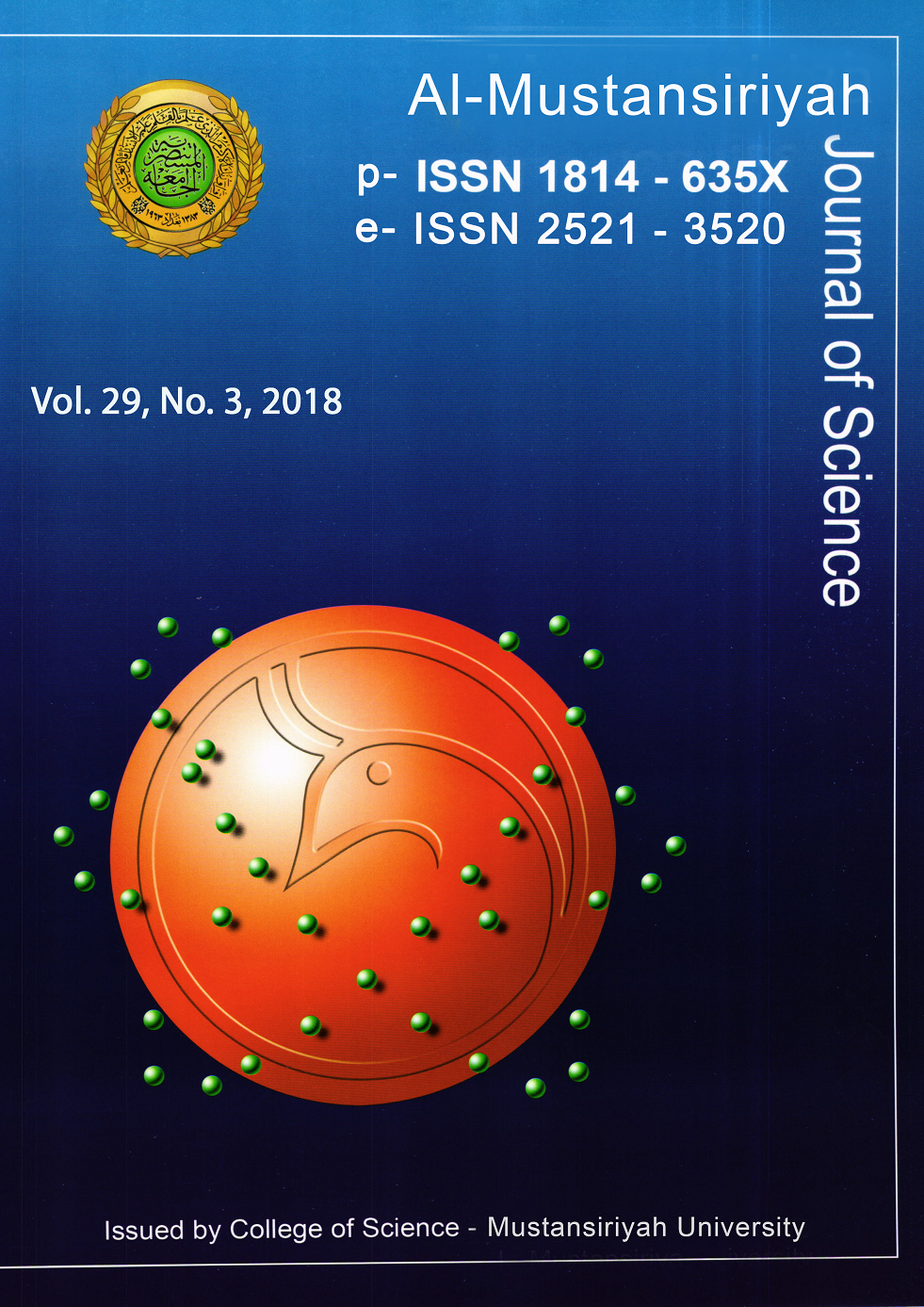Study the Concentration of SO2 Emitted From Daura Refinery by Using Screen View Model
DOI:
https://doi.org/10.23851/mjs.v29i3.616Keywords:
SO2, Screen View Model, Pollutants, Plume.Abstract
In this study, the concentrations of sulfur dioxide (SO2) were emitted from the Daura oil refinery units and their effect on the surrounding areas of the refinery were investigated, and also, study the atmospheric stability effective by using the Screen View model, and check the effect of the wind speed and direction on the spread of pollutants. As indicated during this study, the physical factors of the sources of pollution, such as the height of the chimney, its diameter and the surrounding environmental conditions, contributed to the increase in the concentration of contaminants. It was generally observed that the concentration of SO2 increased by increasing the rates of airflow and ambient temperature. This work was prove the influences of weather conditions in the transmission and spread of pollutants such as wind speed, wind direction, atmospheric stability and ambient temperature, but the effect of ambient air temperature was lower than others variables. When the distance increases between the plume and the source of pollution, a heat exchange takes place with the surrounding atmosphere, the difference between the temperature of the emitted gas and the surrounding atmosphere decreases and the buoyant force increases. This leads to a lack of vertical movement that disperses the contaminants. In addition, the concentration of the pollutants decreases with the distance increases from the source of the pollution. In the present work, emission rate of SO2, and stack gas exit velocity calculated for all stacks (point sources) of the twelve production units during August 2013, and February 2014 by using the actual amounts of fuel consumed in Daura refinery in this period.Downloads
References
M. H. K. Al-Jiboori, Atmospheric Pollution, Ministry of Higher Education and Scientific Research, Mustansiriyah University, College of Sciences, Department of Atmospheric Sciences, 2015.
R. K. Al-Kubaisi, Study on concentration of certain contaminants in the air of the session area. First National Conference on environmental pollution and methods of protection, Atomic Energy Organization, Baghdad, 2000.
I. W. Al-Tamimi, PhD Dissertation, Model for the estimation of air pollutants in the city of Baghdad, Department of Atmospheric Sciences, College of Science, Mustansiriyah University, 2006.
H. N. N. Fathallah, Master Thesis, Assessment of air pollution in some LPG filling stations in Baghdad, Department of Atmospheric Sciences, College of Science, Mustansiriyah University, (2004).
R. E. Luna, and H. W. Charch, A comparison of Turbulence Intensity and Stability Classes. J. Appl. Meteor. 1972, V.11, P.663-669.
D. H.McIntosh, and A. S. Thom, Essentials of Meteorology. Taylor and Francis LTD, London, 1981.
R. M. J. Shubbar, PhD Dissertation, Numerical Simulation of air pollutants using CALPUFF model at an urban area in Baghdad, Iraq,Environmental Atmospheric Sciences, Pukyong National University, South Korea, 2017.
N. J. Snell, Industrial Pollution Control, Van Nostrand Reinhold Company, New York, 1981.
Downloads
Key Dates
Published
Issue
Section
License
Copyright (c) 2019 Al-Mustansiriyah Journal of Science

This work is licensed under a Creative Commons Attribution 4.0 International License.
(Starting May 5, 2024) Authors retain copyright and grant the journal right of first publication with the work simultaneously licensed under a Creative Commons Attribution (CC-BY) 4.0 License that allows others to share the work with an acknowledgement of the work’s authorship and initial publication in this journal.






















